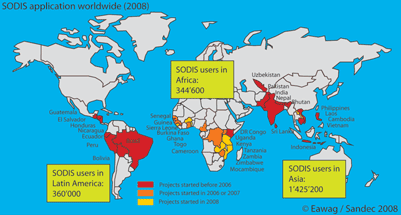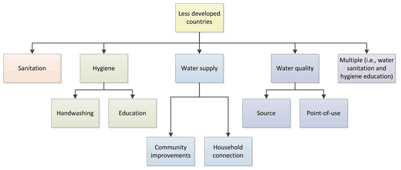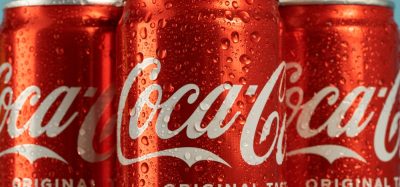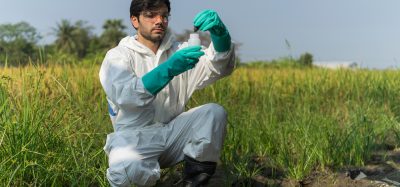Comparison of applicable technologies to secure safe water supplies
Posted: 2 January 2014 | Erik Voigt, Henry Jaeger and Deitrich Knorr, Department of Food Biotechnology and Food Process Engineering, Technische Universitat, Berlin | No comments yet
In the past few years, it has become evident that there are topics that deserve attention, but do not easily fit into existing publications, such as regular scientific journals and scientific book series. The European Federation of Food Science and Technology (EFFoST) therefore decided to initiate a new series of publications, ‘EFFoST Critical Reviews’. It is meant to fill the gap between the journals and the books. This short communication given below is a summary of the EFFoST Critical Review 1 on ‘Securing Safe Water Supplies – Comparison of Applicable Technologies’.


Figure 2: The estimated number of users of SODIS applications worldwide, including starting period of projects and countries in which SODIS is implemented as local house water treatment
In the past few years, it has become evident that there are topics that deserve attention, but do not easily fit into existing publications, such as regular scientific journals and scientific book series. The European Federation of Food Science and Technology (EFFoST) therefore decided to initiate a new series of publications, ‘EFFoST Critical Reviews’. It is meant to fill the gap between the journals and the books. This short communication given below is a summary of the EFFoST Critical Review 1 on ‘Securing Safe Water Supplies – Comparison of Applicable Technologies’.
The full version is available as paperback or eBook. The review discusses the availability of potable water in the world and technologies to make water safe, in particular under difficult circumstances, such as after natural disasters. The review, however, covers technologies that are applicable everywhere, in disaster areas as well as in developing and developed countries. The review is the result of a thorough study by the authors of the global situation with respect to the availability of potable water as part of the EU Project NovelQ.
Introduction
Water disinfection is a crucial step in the production of safe drinking water as well as in the generation of water used during the processing of food. Different methods and technologies exist and need to be selected depending on the type of application and food industry sector. Whereas sophisticated solutions can be realised in industrialised countries, the situation becomes more challenging in developing countries and disaster areas where access to safe water is limited. According to Kofi Annan, former UN Secretary General (1997 – 2006), no single measure would do more to reduce disease and save lives in the developing world than bringing safe water and adequate sanitation to all.
In the UN Millennium Development Goals, signed in 2000 by 189 countries, target 7c states that, by the year 2015, the proportion of people without sustainable access to safe drinking water and basic sanitation should be halved (from 65 per cent to 32 per cent). This goal includes improved access to sanitation, drinking water sources, better hygiene and improved water quality by municipal or home water treatment. A classification of possible types of interventions is given in Figure 11.
Climate change is one of the greatest environmental challenges facing the global community, and will have a worldwide effect on water sustainability. Water stress and scarcity will increase because of changes in seasonal rain and snow patterns, coupled with increased demand due to continued population growth. Currently, 1.1 billion people lack access to safe water and 2.6 billion people lack access to proper sanitation. As a result, more than 4,500 children under five years of age die every day from easily preventable diseases such as diarrhoea2.


Figure 1: Classification of interventions to reduce diarrhoea in less developed countries
There is emerging evidence that climate-induced changes in temperature and precipitation patterns will increase water-related infectious diseases, especially diarrhoeal diseases. In addition, there is already evidence that climate change is resulting in rising sea levels, increased cyclonic activity, and increased intensity and frequency of floods and droughts. Hence, in addition to the need for the continuous improvement of water access and quality in the developing world, there is a need for water decontamination in disaster areas. Natural disasters occur worldwide and very often produce an immediate need for clean, safe drinking water because of the damage to existing water supply systems, contamination of water sources and the creation of refugee camps.
Experience shows, however, that access to improved water supply facilities is no guarantee for safe and reliable water, especially in developing countries where tap water can be unsafe because of inadequate treatment and recontamination during transport or storage or at home. Disinfection is of unquestionable importance in the supply of safe drinking water and the destruction of microbial pathogens is essential3. Point-of-use and small-scale treatment is a promising strategy to improve access to safe drinking water, particularly for the poor. Easy-to-handle home water treatment devices could help to prevent many of disease outbreaks and save many lives, especially when combined with improved sanitation and hygiene, since many pathogens are waterborne.
Sustainable supply, storage and transport of clean freshwater are a main challenge involving food process engineering and the food industry directly or indirectly. New concepts will be required considering the abovementioned aspects of water handling and linking it to food processing as well as to the agricultural production of food, considering that more than two-thirds of the fresh-water used on earth is currently needed to produce food and animal feed.
Basic methods for water disinfection
Boiling or heat treatment of water is effective against the full range of microbial pathogens and can be employed regardless of the turbidity or dissolved constituents in the water. However, the considerable amount of energy required (wood, charcoal, fuel) and associated costs including time are leading to alternatives.
Chemical disinfection reduces the overall risk of disease, but may not render the supply safe to drink. Chlorine is used in various forms and its antimicrobial effects are based on pronounced oxidation and rapid binding to proteins including enzymes and nucleic acids. However, the efficiency of chlorine depends on the presence of organic substances since these compounds react with the disinfectant and reduce its efficiency. Chlorine disinfection of drinking-water has limitations against the protozoan pathogens – in particular Cryptosporidium – and some viruses. Another common method of disinfecting water is ozonation, also known as ozone disinfection. Ozone is generated by electrical discharge through dry air or pure oxygen on site because it decomposes rapidly to elemental oxygen. Chemical flocculants such as ferric sulphate are used as a pre-treatment to remove solids from the water and improve subsequent disinfection. The use of chemical disinfectants in water treatment usually results in the formation of chemical by-products. However, the risks to health from these by-products are extremely small in comparison with the risks associated with inadequate disinfection. It is important that disinfection is not compromised by attempting to control such by-products. Some disinfectants such as chlorine can be easily monitored and controlled as a drinking-water disinfectant, and frequent monitoring is recommended wherever chlorination is practised3.
Mechanical means such as filtration are also used in order to remove solid pollutants. Ceramic filters with small pores, often coated with silver for bacteriostasis, have been shown to be effective at removing microbes and other suspended solids. Filters need to be cleaned regularly. Reverse osmosis (RO) is best known for use in desalination (removing the salt and other minerals from seawater to get freshwater), but since the early 1970s, it has also been used to purify fresh water for medical, industrial and domestic applications. Reverse osmosis can be used to improve water for drinking and cooking, and portable reverse osmosis water processors are sold for personal water purification in a variety of locations.
Solar disinfection (SODIS) is a simple water treatment method, which uses solar radiation (UV-A light and temperature) to destroy pathogenic bacteria and viruses present in the water4. It can be used to disinfect small quantities of water with low turbidity. An overview on SODIS applications worldwide is given in Figure 2. Similarly, ultraviolet light is suitable for oxidation and reduces contamination in water. UV disinfection is a physico-chemical process, and the light is generated using special UV lamps. Ultraviolet light is also suitable for oxidation and therefore for the reduction of undesirable substances in water. For example, UV light with a wavelength of 185 nm oxidises hydro – carbons, chlorine, N-nitrosodimethylamine (NDMA) and reduces total organic carbon (TOC) values. In combination with ozone and peroxide UV-light can additionally be used for advanced oxidation processes (AOP) for degradation of persistent pollutants from drinking water.


Figure 2: The estimated number of users of SODIS applications worldwide, including starting period of projects and countries in which SODIS is implemented
as local house water treatment
Pulsed electric fields technology (PEF) is also a non-thermal method for decontaminating liquids. The treatment is effective for the inactivation of vegetative microbial cells. The power requirements depend on the scale of the system. The electric field strength applied to inactivate microorganisms is in the range of 2 – 4 kV/mm and can be generated for a small unit manually or by solar power.
For regions difficult to access or with low colonisation, it is more reasonable to implement several household-size systems. For refugee camps, highly colonised areas etc., it is more feasible to operate large systems. Uncomplicated, robust and easy-to-use technologies, which work in most climatic environments, are optimal for operating water sanitation systems in disaster areas. Not all of the methods listed above are convenient in rural areas of developing countries, because they may require skilled staff, electricity or fuel and the reliable supply of spare parts and consumables, like membrane filtration. Hence, depending on local conditions and advantages and disadvantages of the method, a selection needs to be made. Decisions about which system to choose and how much training effort has to be invested includes not only technical criteria but also local cultural beliefs and education. The development of adjusted processes by employing technical based knowledge as well as using modern tools in order to increase process efficiency is a key point in this context and will require input from a food engineering perspective.
Commercial water disinfection systems available on the market
The EFFoST Critical Review 1 on ‘Securing Safe Water Supplies – Comparison of Applicable Technologies’ contains an extensive list of commercial water disinfection systems comparing different aspects such as working principle, capacity, energy requirements, robustness and costs among others. There are many devices and systems available on the market. Furthermore, there are a number of competing commercial companies and several commercially available systems of municipal size, which are designed to be user-specific and purpose-built. However, significant deterioration of water quality may occur between water collection and consumption.
Unhygienic handling of water during transport or within the home can contaminate previously safe water. In such situations, investing in conventional water treatment at-source will not prevent diarrhoeal diseases. Household Water Treatment Systems (HWTS) and safe storage are cheaper and more effective. Household-level intervention can be very effective in preventing disease if used correctly and consistently. A high percentage of people could, therefore, benefit from effective household water treatment and safe storage practices.
As with sanitation, the promotion of water treatment at household level requires a behavioural change approach, which goes beyond the mere provision of technology. Householders must have the motivation to treat their drinking water, and the technologies and consumables must be affordable and easily available5,6.
Although household water treatment is important, ensuring water quality at-source remains crucial. Unfortunately, this is an area of increasing global concern. Systems in industrial / municipal size are mainly designed for hospitals, schools, refugee camps and water sources of (municipal) communities up to 40,000 people. Working principles mainly include multistage processes and a modular conception consisting of flocculation, filtration and disinfection.
Conclusion
Water is a scarce source in temporal and regional terms and water shortages as well as water crises affect many people suffering from limited access to safe water as well as basic sanitary services. An effective overall water management strategy incorporates multiple barriers including at-source water protection and appropriate treatment as well as protection during storage and distribution in conjunction with disinfection to prevent or remove microbial contamination. Sustainable water management also plays a major role for food production and food processing which depend on the availability of high quality water as well.
Available water disinfection systems rely mainly on large-scale filtration and a combination of filtration (to remove solids) and subsequent chemical disinfection. This approach has proved to produce water of acceptable quality. Important points for use in household systems are low complexity, few training requirements, and easy transportation and distribution as well as a sufficiently high acceptance by the user.
The use of a Pulsed Electric Field (PEF) system in disaster areas will require water with a low turbidity unit to allow proper operation of the system or the application of higher power levels. The lack of performance indicators and the risk of insufficient inactivation going unnoticed by the user need to be compensated for with reliable technical performance. The advantages and disadvantages of this alternative system should be considered carefully and, based on the results, its usefulness and further development for specific applications decided.
As an important part of improving water treatment, training and behaviour change need to be taken into account and education and promotion need to be implemented in order to reach the target group at the points of sale. Printed materials along with face-toface communication should actively promote safe water systems and their benefits.
The EFFoST Critical Review 1 on ‘Securing Safe Water Supplies – Comparison of Applicable Technologies’ aims to provide relevant background information to allow a knowledge-based decision on the suitability of available, and the need for the development of, improved water sanitation systems.
Acknowledgements
This work was financially supported by the Commission of the European Communities, Framework 6, Priority 5 ‘Food Quality and Safety,’ Integrated Project NovelQ FP6-CT-2006-015710. The authors gratefully acknowledge Huub Lelieveld and Siân Astley for their assistance with the preparation of the report.
References
- Fewtrell, L., Kaufmann, R. B., Kay, D., Enanoria, W., Haller, L., Colford, J. M.: Water, sanitation, and hygiene interventions to reduce diarrhoea in less developed countries: a systematic review and meta-analysis, Lancet Infectious Diseases, 2005, 5(1): 42-52
- World Health Organization: The World Health Report 2007, 2007
- World Health Organization (2008): Guidelines for Drinking-water Quality, 3rd Edition, 2008
- KWR Watercycle Research Institute: Smart Disinfection solutions, 2010
- UNICEF: Progress on Drinking Water and Sanitation – Special Focus on Sanitation, 2008
- UNICEF: Soap, Toilets, and Taps – A Foundation for Healthy Children, 2009
Biography
Erik Voigt is a research associate in the Department of Food Biotechnology and Food Process Engineering at Technische Universität Berlin. He holds an Engineering Degree in Food Technology. His research is focused on the inactivation of microorganisms in liquid foods as well as the process induced improvement of mass transfer processes during processing of plant raw materials as well as for the recovery of metabolites from microorganisms.
Henry Jaeger currently holds a position at Nestlé R&D and is visiting lecturer at Technische Universität Berlin. Before, he was researcher at the Department of Food Biotechnology and Food Process Engineering at Technische Universität Berlin where he obtained his PhD as well as an Engineering Degree (Dipl.-Ing.) in Food Technology. His work is focused on the application of alternative, non-thermal technologies for the gentle preservation as well as the targeted modification of food.
Dietrich Knorr is a Professor at the Department of Food Biotechnology and Food Process Engineering at Technische Universität Berlin. He received an Engineering Degree (Dipl.-Ing.) and a PhD in Food and Fermentation Technology from the University of Agriculture in Vienna. Professor Knorr is Editor of the Journal Innovative Food Science and Emerging Technologies and President of the European Federation of Food Science and Technology. He has published approximately 500 scientific papers, holds seven patents and is one of the ISI highly cited researchers.









